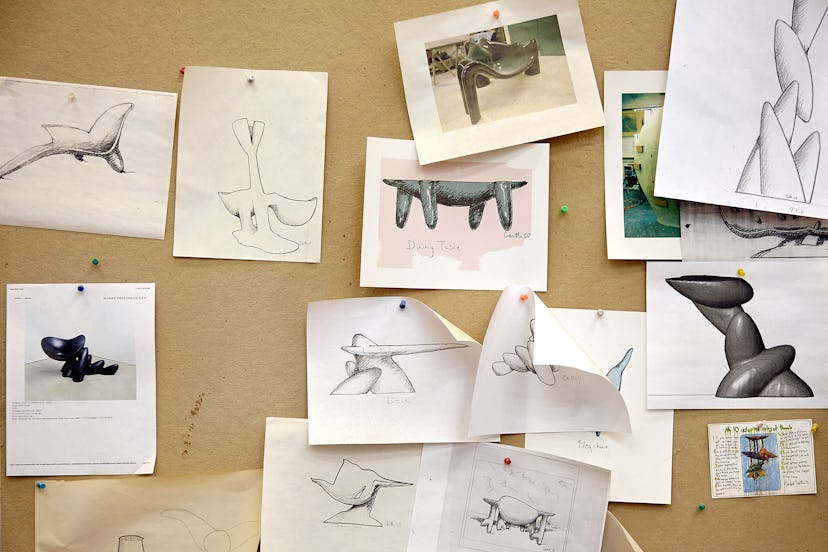Wendell Castle’s Organic Formalism

81-year-old designer Wendell Castle may be the grandfather of Fine Arts Furniture movement, but that hasn’t slowed down his innovating spirit. Working out of his converted grain mill studio in upstate New York, Castle continues to explore new ways to meld the vocabulary of a craftsman with that of a sculptor. The designer’s upcoming show at Friedman Benda achieves this harmonious balance with an exhibition of nest-like seats rendered in bronze and wood. Here, Castle gives a little insight into his artful approach to design.
“Wendell Castle: Gathering Momentum” is on view until April 30th at Friedman Benda, 515 W 26th Street, New York.
1
Castle with one of his pieces in his studio in Scottsville, NY.
2
“The way I work is that I draw first to get ideas. When I think I have a good one, I make a model of it.”
3
“I’m self-taught as a furniture maker, but I’m not self-taught as an artist. And that is a very good thing because I don’t need to know how to make furniture in a conventional way—that wouldn’t have gotten me anywhere.”
4
“I’m very interested in balance, both real and artificial. I think it creates drama. I like the idea that things are not what they seem to be. The balance may look off but it isn’t.”
5
“At home I don’t even use coasters. I put my feet up on the coffee tables. I made everything in my house except the piano—and I have made pianos.”
6
“When I first started making furniture and stopped making sculpture, I had to sort of tell myself, convince myself, that furniture was just as important and that it had the same opportunities.”
7
“A computer really has a mind of its own. It wants to make really smooth curves. I don’t want those kind of curves, so the only way I can keep that from happening is to scan my physical models.”
8
“I follow the model till pretty close to the end, but I almost always do a little tweaking.”
9
“To make these keys we used our carving robot, we could never have done these by hand.”
10
“Every piece is a risk.”
11
“I make mostly chairs because chairs have the most opportunity for exploring form.”